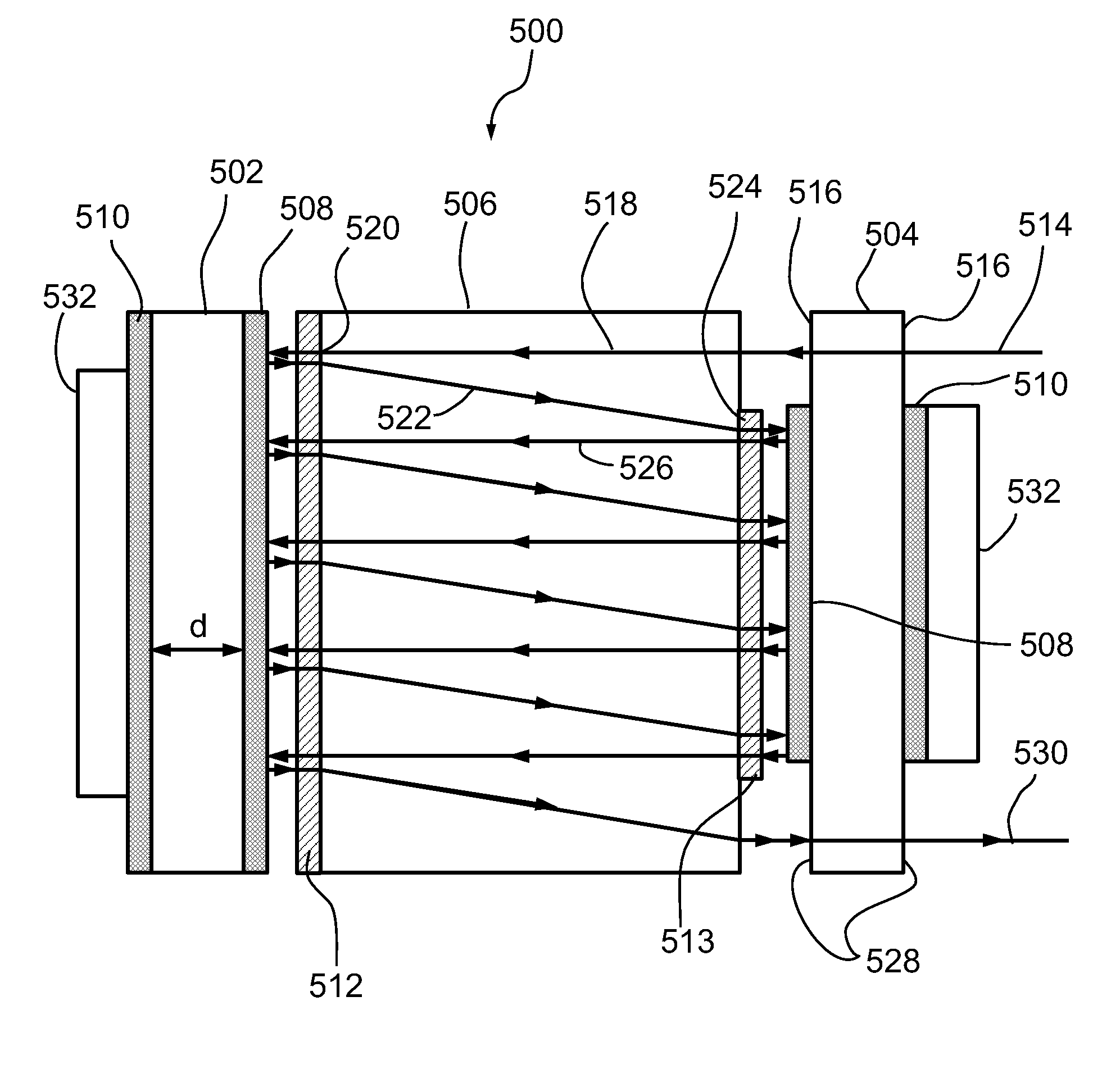Devices for dispersion compensation, beam displacement, and optical switching
a technology of optical switching and dispersion compensation, applied in electromagnetic transmission, transmission, instruments, etc., can solve the problems of optical-electrical signal converters that are expensive, dominate the cost of the network, and the signal degradation and unacceptably high error ra
- Summary
- Abstract
- Description
- Claims
- Application Information
AI Technical Summary
Benefits of technology
Problems solved by technology
Method used
Image
Examples
Embodiment Construction
[0096]In describing the drawings, language will sometimes be used to the effect that a light beam undergoes a first event, for example an interaction with or passage through an optical element, followed in time by a second event. It should be understood that such language means that the second event would follow the first event from the point of view of an observer traveling along the light beam in the direction that the light is propagating. But at any given time, both of the events may be taking place simultaneously, to different parts of the beam.
[0097]FIG. 1 schematically shows a dispersion compensation device 100, used for dispersion compensation in an optical network, according to an exemplary embodiment of the invention. We will first describe the overall architecture of the device, and then, starting with FIG. 5, describe how the dispersion compensation works.
[0098]Device 100 may be incorporated into an existing transceiver or transponder used in an optical network, or it ma...
PUM
 Login to View More
Login to View More Abstract
Description
Claims
Application Information
 Login to View More
Login to View More - R&D
- Intellectual Property
- Life Sciences
- Materials
- Tech Scout
- Unparalleled Data Quality
- Higher Quality Content
- 60% Fewer Hallucinations
Browse by: Latest US Patents, China's latest patents, Technical Efficacy Thesaurus, Application Domain, Technology Topic, Popular Technical Reports.
© 2025 PatSnap. All rights reserved.Legal|Privacy policy|Modern Slavery Act Transparency Statement|Sitemap|About US| Contact US: help@patsnap.com



